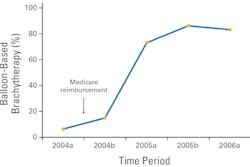
The U.S. Food and Drug Administration (FDA) today announced a new priority review program for innovative medical devices. Products reviewed under the program could hit the market more quickly, with the FDA conducting reviews within 150 days -- nearly half the time it currently takes.
The FDA held a media briefing February 8 to explain the program, called the Innovation Initiative, within the agency's Center for Devices and Radiological Health (CDRH). It's part of the agency's broader effort to encourage cutting-edge technologies among medical device manufacturers, said Margaret Hamburg, MD, the FDA's commissioner.
"This initiative has broad implications for how the FDA does business, and how we continue to support opportunities for innovation," she said.
Eligible devices are those that are intended to treat or diagnose a life-threatening or irreversibly debilitating disease or those that address an unmet medical need, said Jeffrey Shuren, MD, director of the CDRH.
"If the device represents a breakthrough technology that provides advantages over existing technology, if no approved alternative treatment or means of diagnosis exists, or if the availability of the device is in the best interest of patients, it will be eligible for this track," Shuren said. "Of course, being accepted into the Innovation Initiative does not guarantee approval, just as with other regulatory processes."
The agency is proposing a number of actions as part of the initiative, including:
- The Innovation Pathway, a priority review for pioneering medical devices
- Establishing a voluntary, third-party certification program for U.S. medical device test centers designed to promote rapid improvements to new technologies during a product's development and clinical testing stages
- Creating a publicly available core curriculum for medical device development and testing to train the next generation of innovators
- Using more device experience and data collected outside the U.S.
The first submission that will serve as a pilot for the program will be a brain-controlled, upper-extremity prosthetic being developed by the Defense Advanced Research Projects Agency (DARPA) of the U.S. Department of Defense, Shuren said. The device is designed to restore near-natural arm, hand, and finger function to patients suffering from spinal cord injury, stroke, or amputation.
Beyond PMA?
Applications for the initiative will be reviewed by the Center Science Council, a new oversight body that CDRH is developing. If a device is selected for the Innovation Pathway program, CDRH will give the manufacturer a memorandum that contains a proposed timeline for device development, clinical assessment, and regulatory review, Shuren said. Products will be assigned a case manager, their scientific issues will be identified and addressed earlier in the development process, and they may qualify for flexible clinical trial protocols.
But enrollment in the Innovation Pathway program will not change the scientific or regulatory standards that CDRH uses to evaluate device submissions and determine their appropriateness for marketing, according to Shuren. The key difference between the current premarket approval (PMA) process and the Innovation Pathway is when the CDRH gets involved.
"[As it stands now in the premarket approval process,] a company would engage us much later in device development," Shuren said. "What's different in the Innovation Pathway process is the level of commitment from the Center. We'll be front-loading our resources, getting involved with [a device manufacturer] around the time the prototype is developed."
CDRH is seeking further public comment on the Medical Device Innovation Initiative through an open public docket before it can be used more broadly, and it will host a public meeting to field feedback at its White Oak, MD, campus on March 15, the center said.
By Kate Madden Yee
AuntMinnie.com staff writer
February 8, 2011




















